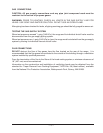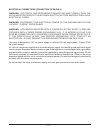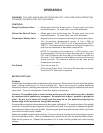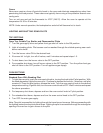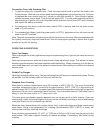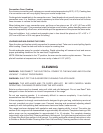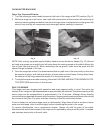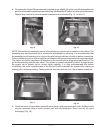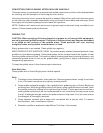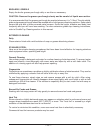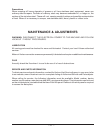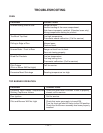
— 20 —
BROILERS / GRIDDLE
Empty the broiler grease pan/trough daily or as often as necessary.
CAUTION: Remove the grease pan/trough slowly and be careful of liquid wave action.
It is recommended that the grease pan/trough be emptied whenever it is
3
/4 filled. The drip shield,
grids and grease pan/trough should be washed with a mild grease-dissolving solution. Some chefs
scrape the grid with a three-cornered metal scraper. Scrub the broiler chamber and body front
frequently and you will have less smoking. For more extensive griddle top cleaning instructions,
refer to Griddle Top Cleaning section in this manual.
EXTERIOR CLEANING
Daily
Clean exterior finish with a mild solution of soap or grease-dissolving cleaner.
STAINLESS STEEL
Here are a few simple cleaning procedures that have been found effective for keeping stainless
steel equipment clean, sparkling and bright.
General Cleaning
Use ordinary soap or detergent and water for routine cleaning of stainless steel. To prevent water
spots and streaks, rinse thoroughly with warm water and wipe dry with a soft clean cloth. The
addition of a rinsing agent will also help prevent spotting.
Fingerprints
Fingerprints are sometimes a problem on highly polished surfaces of stainless steel. They can be
minimized by applying a cleaner that will leave a thin oily or waxy film.
To use these cleaners, simply wipe on and remove excess with a soft dry cloth. After using,
subsequent fingerprints will usually disappear when wiped lightly with a soft cloth or with a cloth
containing a little of the cleaner. If the surface is especially dirty to start, wash first with soap or
detergent and water.
Burned-On Foods and Grease
Soaking with hot soapy water will help greatly to remove burned-on foods and grease.
Heat Tint
Straw-colored or slightly darkened areas may appear on stainless steel in and around ovens and
ranges where temperatures reach 500°F (260°C) or more. This "heat tint" is caused by a slight
oxidation of the stainless steel and is not harmful.
To control or minimize this condition, never use more heat than is absolutely necessary.
Commercial heat tint remover products may be used.



